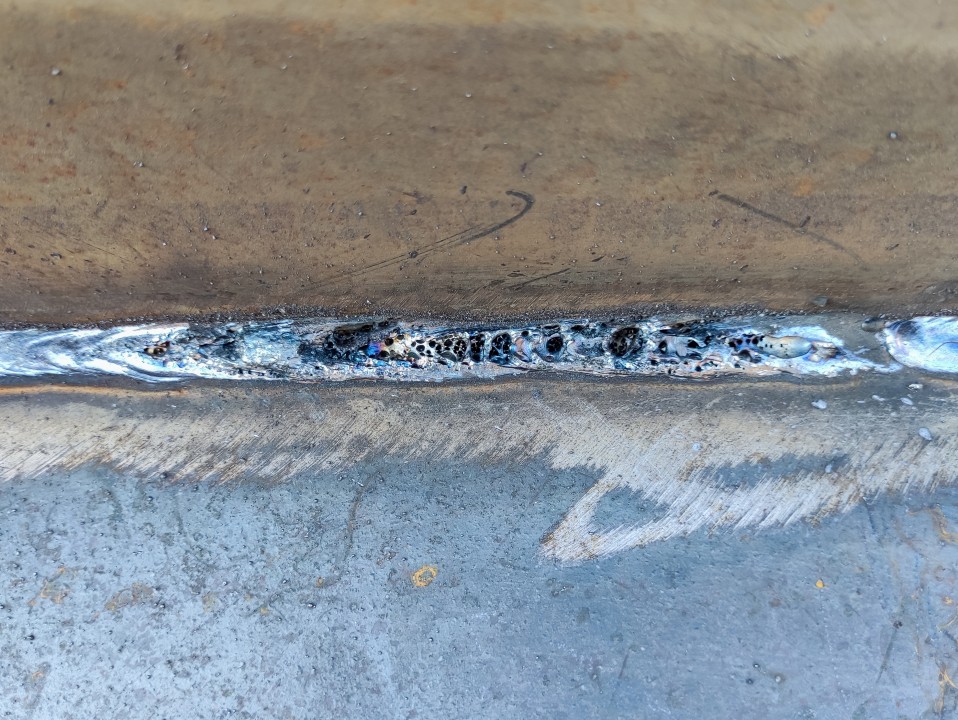Porosity in Welding: Identifying Common Issues and Implementing Best Practices for Avoidance
Porosity in welding is a prevalent problem that usually goes unnoticed until it triggers considerable issues with the integrity of welds. This common flaw can endanger the toughness and durability of welded structures, posing safety risks and leading to pricey rework. By comprehending the origin of porosity and implementing reliable prevention strategies, welders can dramatically enhance the quality and integrity of their welds. In this discussion, we will explore the key factors adding to porosity formation, analyze its detrimental results on weld efficiency, and discuss the very best practices that can be embraced to decrease porosity incident in welding procedures.
Typical Sources Of Porosity

Making use of dirty or wet filler products can introduce impurities into the weld, contributing to porosity problems. To alleviate these typical reasons of porosity, comprehensive cleansing of base steels, proper shielding gas option, and adherence to ideal welding specifications are necessary techniques in attaining top quality, porosity-free welds.
Effect of Porosity on Weld Quality

The presence of porosity in welding can dramatically jeopardize the architectural stability and mechanical properties of welded joints. Porosity develops gaps within the weld metal, deteriorating its total strength and load-bearing capacity.
Welds with high porosity degrees often tend to exhibit lower effect stamina and decreased capability to deform plastically prior to fracturing. Porosity can hamper the weld's capability to efficiently transmit pressures, leading to early weld failing and potential safety hazards in critical structures.
Finest Practices for Porosity Avoidance
To boost the architectural honesty and top quality of bonded joints, what details measures can be implemented to minimize the occurrence of porosity throughout the welding procedure? Utilizing the appropriate welding strategy for the particular product being bonded, such as changing the welding angle and gun setting, can even more avoid porosity. Regular inspection of welds and prompt removal of any type of problems identified throughout the Check This Out welding process are vital practices to prevent porosity and produce top notch welds.
Significance of Correct Welding Techniques
Implementing proper welding techniques is critical in ensuring the architectural honesty and top quality of bonded joints, constructing upon the structure of reliable porosity avoidance steps. Excessive warm can lead to increased porosity due to the entrapment of gases in the weld swimming pool. Additionally, making use of the suitable welding parameters, such as voltage, existing, and travel rate, is essential for attaining sound welds with marginal porosity.
Furthermore, the selection of welding procedure, whether it be MIG, TIG, or stick welding, must line up with the particular needs of the job to make sure optimum outcomes. Appropriate cleaning and preparation of the base steel, in addition to choosing the right filler product, are additionally important elements of proficient welding methods. By sticking to these finest methods, welders can minimize the threat of porosity formation and produce high-grade, structurally audio welds.

Examining and Quality Assurance Steps
Quality control actions play a crucial duty in confirming the honesty and reliability of welded joints. Checking treatments are essential to spot and prevent porosity in welding, making certain the stamina and resilience Going Here of the last product. Non-destructive screening techniques such as ultrasonic testing, radiographic testing, and visual inspection are frequently employed to recognize potential problems like porosity. These methods permit the analysis of weld top quality without endangering the honesty of the joint. What is Porosity.
Post-weld assessments, on the various other hand, evaluate the last weld for any kind of issues, consisting of porosity, and verify that it meets defined standards. Executing a thorough quality control plan that consists of detailed special info testing procedures and assessments is paramount to decreasing porosity problems and making certain the general high quality of bonded joints.
Conclusion
Finally, porosity in welding can be a common concern that affects the high quality of welds. By determining the usual reasons of porosity and implementing best methods for prevention, such as appropriate welding methods and screening actions, welders can guarantee excellent quality and reliable welds. It is necessary to focus on avoidance approaches to minimize the occurrence of porosity and preserve the honesty of bonded frameworks.